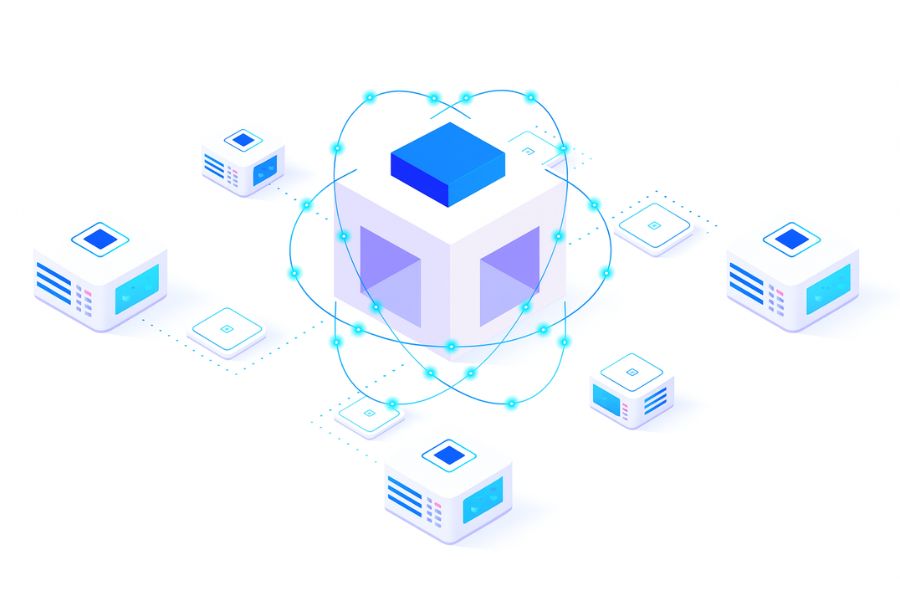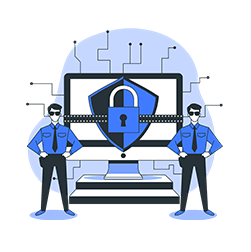
Distributed Denial of Service (DDoS) attacks are one of the most serious threats facing European businesses in 2025. Attackers now use multi-vector strategies, combining volumetric floods with Layer 7 application-level attacks that mimic real user traffic. These campaigns are highly disruptive, often exceeding terabits per second and capable of bringing down even enterprise-scale infrastructure.
The financial impact is staggering. Reports show the average cost of downtime in Europe exceeds €200,000 per hour, with eCommerce, fintech, SaaS, and gaming industries suffering the hardest blows. Customers lose trust instantly when a platform becomes unreachable.
This is why selecting the right DDoS mitigation service providers is critical. A provider must do more than absorb traffic; it must ensure low latency, regulatory compliance, and reliable uptime. The challenge for businesses is identifying the best DDoS protection partner in a crowded market of global and local competitors.
What Do DDoS Mitigation Service Providers Do?
DDoS mitigation service providers deliver security solutions that detect, filter, and neutralize malicious traffic before it overwhelms infrastructure. Their services often include:
- Scrubbing centers that reroute and clean incoming traffic.
- DDoS protection proxies that separate legitimate requests from bot-driven floods.
- 24/7 SOC monitoring to respond instantly when anomalies arise.
In simple terms, providers ensure websites and applications remain online during attacks. They do so by applying rate-limiting, packet inspection, and Layer 7 analysis at scale.
A frequent query is, “What is a DDoS protected dedicated server?” The answer is simple: it’s a dedicated server bundled with integrated mitigation services, where every incoming packet is analyzed by a proxy or scrubbing center before reaching the server itself.
Core Features to Look for in Providers
When selecting DDoS mitigation service providers, businesses must evaluate features that directly impact uptime, latency, and resilience. Key factors include:
- High Network Capacity
Providers should maintain multi-terabit networks capable of absorbing massive volumetric attacks. Without sufficient bandwidth, even strong filtering will fail under scale. - Low Latency Routing
Effective mitigation must not compromise speed. Low-latency routing ensures legitimate users experience seamless access, especially for gaming, fintech, and SaaS platforms. - Layer 7 Application Filtering
Modern attacks frequently target APIs and login endpoints. Providers with deep packet inspection and Layer 7 defenses can distinguish bots from human traffic more effectively. - SSL-Enabled Proxy Support
Since most enterprise traffic is encrypted, providers must offer SSL/TLS inspection to filter malicious packets within secure sessions while keeping latency minimal. - 24/7 SOC Monitoring
Automated defenses are essential, but round-the-clock human oversight from a Security Operations Center ensures rapid escalation and response when new attack patterns emerge. - Dedicated IP Advantage
A common question is, “Is dedicated IP faster?” The answer is yes. Dedicated IPs provide consistent routing, avoid blacklisting issues, and enhance performance when passing through mitigation proxies.
Remote vs On-Premises Mitigation Providers
European businesses face a choice: remote or on-premises protection.
- Remote Mitigation: Traffic is routed through external scrubbing centers managed by global providers. Advantages include scalability, predictable OPEX costs, and quick deployment.
- On-Premises Mitigation: Local appliances inspect packets directly inside the company’s infrastructure. This offers tighter control and data sovereignty, but costs more upfront and has hardware limitations.
- Hybrid Mitigation: A combination of remote scrubbing and local filtering is increasingly common, blending scale with control.
Businesses often ask, “Which type of server is best?” The answer depends on use case. For hybrid protection, dedicated servers with strong uplinks and integration with DDoS proxies deliver the best results.
Evaluating Network Capacity and Latency
When choosing a provider, network performance is just as important as filtering capability.
- Capacity: Providers must demonstrate multi-terabit absorption capacity. Anything less leaves businesses vulnerable to record-breaking floods.
- Latency: Low-latency routing ensures that protection doesn’t slow down real users. This is vital for gaming and fintech sectors where milliseconds matter.
- Regional presence: Scrubbing centers must be located in Europe to reduce latency and meet compliance.
A question often raised is, “What is the most reliable server?” The most reliable option is a dedicated server in Europe paired with a provider that offers high-bandwidth routing and local scrubbing centers.
Compliance: GDPR & NIS2 in 2025
European businesses cannot afford to overlook compliance when evaluating DDoS mitigation service providers. Regulations such as GDPR require strict safeguards for handling user data, and any provider that routes traffic through non-EU regions risks violating data sovereignty rules. This is why leading mitigation providers operate EU-based scrubbing centers, ensuring traffic remains within European borders.
At the same time, the NIS2 directive expands obligations for critical sectors such as finance, energy, healthcare, and digital infrastructure. Under NIS2, businesses must demonstrate robust resilience, including effective DDoS protection, to avoid fines and reputational damage.
A frequent question arises: “How much does a dedicated server cost?” The cost typically ranges from €150 to €400 per month for a premium European dedicated server with integrated mitigation. While cheaper servers exist, they often fail to deliver compliance-ready protection, leaving businesses vulnerable to both cyberattacks and regulatory penalties.
Cost Comparison: Subscription vs On-Premises Investment
The cost of mitigation varies depending on approach:
- Remote Providers: Use subscription-based models (OPEX). Costs scale with traffic but avoid upfront CAPEX. Ideal for SMEs.
- On-Premises Appliances: Require significant CAPEX investments plus ongoing maintenance and upgrades. Better suited to large enterprises.
- Hybrid Models: Balance upfront and recurring costs.
Many compare this with budget hosts and ask, “How much does Bluehost cost?” Bluehost offers shared hosting at €20–30/month, but it cannot deliver enterprise-grade DDoS protection or comply with EU regulations, making it unsuitable for serious European businesses.
Best DDoS Protection Features for Enterprises
The best DDoS protection providers for enterprises go far beyond basic volumetric filtering. Modern attacks often target applications directly, which makes application-level defenses essential for login portals, APIs, and payment gateways. Without them, even a modest attack can disrupt mission-critical services.
Another vital feature is behavioral analysis, which monitors traffic patterns to detect stealthy botnets that mimic real users. Combined with advanced rate-limiting, this helps prevent credential-stuffing and brute-force attempts that can compromise accounts.
Equally important is SSL/TLS inspection with minimal latency. Since most enterprise traffic today is encrypted, the ability to filter malicious requests inside secure sessions ensures threats are neutralized before they reach the server.
IT leaders often ask, “Do you need a good GPU to run a dedicated server?” The answer is no. GPUs are not relevant for DDoS mitigation; robust CPUs and specialized proxies perform the packet inspection required to keep enterprise networks secure.
European Market Leaders: Who’s Competing?
The European market is crowded with global and regional players:
- Cloudflare: Strong global presence but higher costs.
- Gcore: Known for low-latency networks.
- Psychz & Voxility: Popular for remote protection and proxy solutions.
- Stormwall & BlockDos: Focused on enterprise DDoS defense.
This leads to questions like, “Does Contabo VPS have a GPU?” Some providers offer GPU VPS, but hardware acceleration doesn’t equal mitigation. The true differentiator is how effectively a provider filters traffic while maintaining low latency.
Real-World Case Studies of European Businesses
ECommerce Retailer (Netherlands): Faced a 300 Gbps attack during a sales event. Remote mitigation via a DDoS proxy absorbed traffic, allowing uninterrupted checkouts.
Fintech Startup (France): Hit by a Layer 7 flood targeting login APIs. A hybrid solution with SSL-enabled proxies maintained secure access for legitimate customers.
Gaming Company (Germany): Required ultra-low latency. Choose a provider with EU-based scrubbing centers to ensure smooth gameplay.
This ties to another query: “What is the best dedicated IP provider?” The best choice is providers that combine RIPE-assigned IPs with integrated DDoS protection, ensuring clean reputations and stable routing.
Choosing NexonHost as Your Provider
Among European DDoS mitigation service providers, NexonHost stands out by combining premium infrastructure with enterprise-grade security. Businesses benefit from premium network routes across major EU hubs, ensuring faster connectivity and reliable uptime. With integrated DDoS proxies that deliver low-latency filtering, attacks are mitigated in real time without affecting user experience. NexonHost also offers 24/7 SOC monitoring backed by strict SLA guarantees, so clients know their platforms are always under expert supervision.
Flexibility is another advantage. NexonHost supports hybrid models, allowing companies to combine remote scrubbing with on-premises controls for stronger compliance and performance. Many businesses ask, “Which is the best server in the world?” The best option is one optimized for your workload with advanced mitigation exactly what NexonHost delivers. Another common question, “What is the best CPU for a dedicated server?” is answered with AMD EPYC or Intel Xeon for maximum resilience.
Secure Your Business with the Right Partner
DDoS attacks will only grow in frequency and complexity. The difference between thriving and failing lies in choosing the right partner.
- SMEs benefit most from remote mitigation with predictable OPEX costs.
- Enterprises in regulated industries lean toward hybrid or on-premises setups for compliance.
- High-traffic industries like gaming, fintech, and SaaS require low-latency proxies and EU scrubbing centers.
A final common query is, “Is a dedicated server better than VPS?” The answer is yes. Dedicated servers provide isolated resources that integrate more effectively with advanced mitigation strategies, ensuring uptime and resilience even under massive attack pressure.
By selecting a provider like NexonHost, European businesses gain not only protection but also a trusted partner for compliance, scalability, and resilience in 2025 and beyond.

